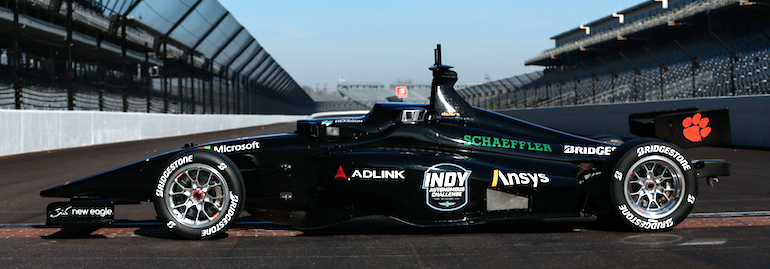
Think You Could Win an Autonomous Car Race on an Artificial Intelligence Controlled Course?
Recently, seven finalist teams competed with autonomous virtual racers on a digital replica of the famous Indianapolis Motor Speedway (IMS) racecourse. The official Indy Autonomous Challenge (IAC) IAC organizers include the Energy Systems Network (ESN) and IMS. Both have been collaborating with Ansys – the designers of the simulated IMS track – on the final virtual race.
Before university teams from around the globe compete in the physical Indy Autonomous Challenge race in October 2021, they had first to prove their software in the virtual world. The winners of the virtual challenge have recently been announced.
PoliMOVE from Politecnico di Milano (POLIMI), Milan, Lombardy, Italy, won the grand prize of $100,000. The runner-up was TUM Autonomous Motorsport from Technische Universität München (TUM), Munich, Bavaria, Germany, awarded $50,000 in cash prizes.
The IAC is a competition among university teams to program autonomous racecars for a head-to-head race. The IAC race is currently scheduled to physically take place Oct. 23, 2021, at the IMS, where fully autonomous Dallara AV-21s must safely and competitively race for the remaining $1.3 million in prizes. Dallara is an Italian race car manufacturer, which produces the AV-21 racecars.
The official vehicle that all Indy Autonomous Challenge Teams must use is the Dallara-produced AV-21 that has been retrofitted with hardware and controls to enable automation. For the last 20 years, Dallara has been the sole supplier of the Indy Lights series, a championship whose primary goal is to prepare drivers for the NTT IndyCar Series.

Dallara-produced AV-21.
Simulation Is Not A Game
With a short timeline and complex engineering challenges, simulation is a critical enabler for teams to safely, rapidly, and cost-effectively develop their controllers in time for the October race.
Seventeen competing teams faced four phases: time trials, validation runs, semi-final heats, and the final race, composed of 10 laps with the seven remaining vehicles, notes the press release. The event was conducted in the same virtual Ansys simulation environment where teams developed the location, perception, prediction, planning, and control algorithms that collectively serve as the racecar controller. This allowed teams to examine their controllers’ ability to navigate the track, avoid collisions and execute strategic racing maneuvers.
John Blyler is a Design News senior editor, covering the electronics and advanced manufacturing spaces. With a BS in Engineering Physics and an MS in Electrical Engineering, he has years of hardware-software-network systems experience as an editor and engineer within the advanced manufacturing, IoT and semiconductor industries. John has co-authored books related to system engineering and electronics for IEEE, Wiley, and Elsevier.

Leave a Reply